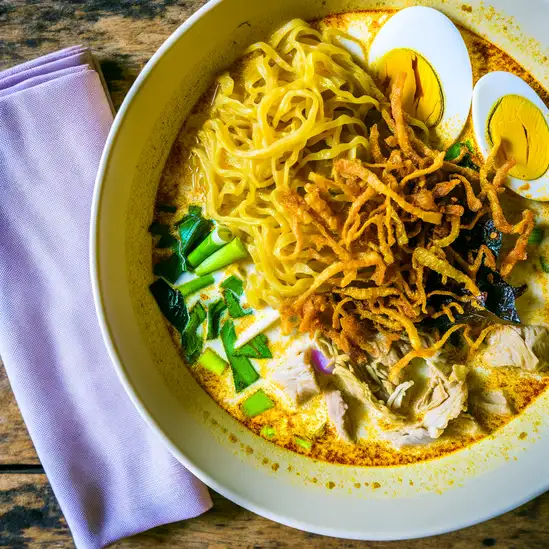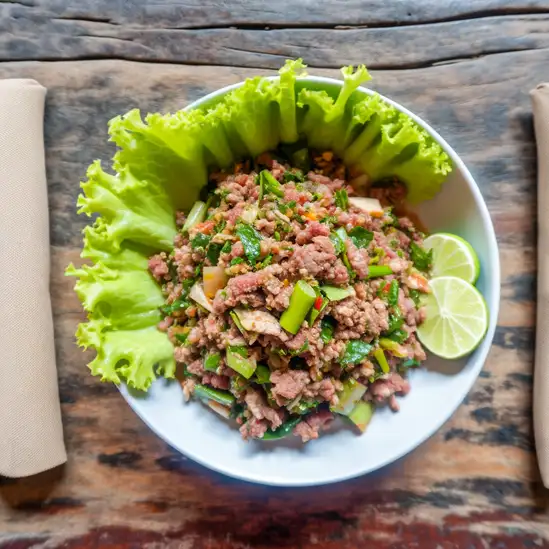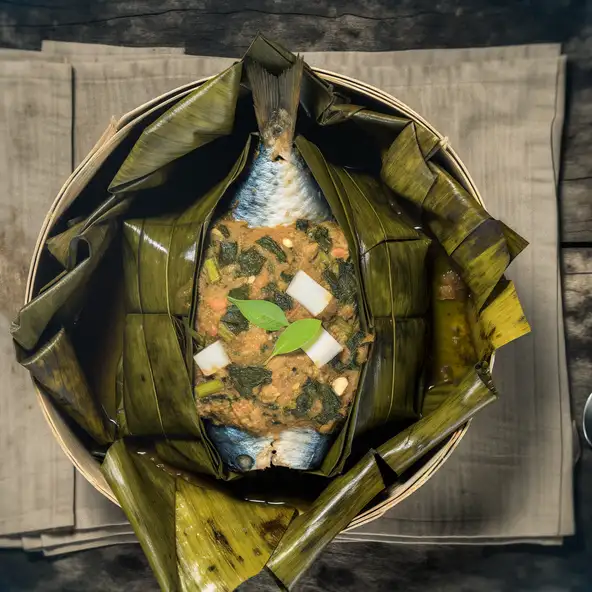


If you ever find yourself wandering through Luang Prabang,you’ll immediately notice a gentle calm that seems to wrap around the town like a soft,warm blanket. It’s the kind of place where mornings start with the quiet shuffle of monks in saffron robes collecting alms,their presence weaving a peaceful rhythm into the day. The air carries a mix of fragrant incense,fresh river breeze,and the subtle sweetness of grilled street food wafting from the night market. Walking along the Mekong River at sunset,the sky blushes in shades of pink and gold,reflecting off the water and making everything feel a little more magical.
The city’s charm lies in its blend of old and new — colonial French architecture stands side by side with ancient Buddhist temples,their intricate carvings telling stories that have lasted centuries. You can lose yourself in narrow streets lined with wooden houses,each corner revealing a quiet café or a bustling market stall selling sticky rice wrapped in banana leaves or freshly brewed Lao coffee that’s rich and earthy. The locals greet you with genuine smiles,and there’s a softness in their hospitality that makes you feel like you’re more than just a visitor.
What really makes Luang Prabang unforgettable is how it invites you to slow down and savor the moment. Whether you’re watching the monks’ morning procession,exploring hidden waterfalls nearby,or simply sitting by the river with a cold Beerlao in hand,the city encourages a kind of mindful joy that stays with you long after you leave.
The information on this page is currently being reviewed by Tripkliq and should be used as a guide only
Eng word: Hello
Eng pronunciation: sa-bai-dee
Local language: ສະບາຍດີ
Eng word: Goodbye
Eng pronunciation: la-gon
Local language: ລາກ່ອນ
Eng word: Thank you
Eng pronunciation: khawp-jai
Local language: ຂອບໃຈ
Eng word: How much
Eng pronunciation: thao-dai
Local language: ເທົ່າໃດ
Eng word: Toilet
Eng pronunciation: hong-nam
Local language: ຫ້ອງນ້ຳ
Eng word: Help me
Eng pronunciation: suay-khoi-nae
Local language: ຊ່ວຍຂ້ອຍແນ່
Eng word: Yes
Eng pronunciation: maen-laew
Local language: ແມ່ນແລ້ວ
Eng word: No
Eng pronunciation: bo
Local language: ບໍ່
Eng word: Excuse me
Eng pronunciation: khor-thot
Local language: ຂໍໂທດ
Luang Prabang was the capital of the Lan Xang Kingdom, one of the largest kingdoms in Southeast Asia, from the 14th to the 16th century.
In 1995, Luang Prabang was designated a UNESCO World Heritage Site for its unique blend of traditional Lao and colonial French architecture.
The Royal Palace, built in 1904 during the French colonial era, now serves as a museum showcasing artifacts from the city's royal past.
Wat Xieng Thong, built in 1560, is one of the most important and beautiful temples in Laos, known for its intricate mosaics and stunning architecture.
Mount Phousi is a 100-meter high hill in the center of Luang Prabang, offering panoramic views of the city and the Mekong River. It is also home to several important Buddhist shrines.
The daily alms giving ceremony, where monks collect food from locals and tourists, is a centuries-old tradition that continues to be a significant cultural practice in Luang Prabang.
Luang Prabang's architecture and urban planning were significantly influenced by French colonial rule, which lasted from the late 19th century until 1953.
Located about 25 kilometers from Luang Prabang, the Pak Ou Caves are famous for their thousands of Buddha statues and have been a place of worship for centuries.
Luang Prabang is renowned for its traditional Lao textiles, with many local artisans continuing the ancient craft of silk weaving and dyeing.
In Luang Prabang, the most common Power Adaptor is Type C, Type E, Type F.







A flavorful noodle soup made with egg noodles, coconut milk, and a variety of meats, often garnished with pickled mustard greens and lime.

A traditional Lao salad made with minced meat (usually chicken, beef, or fish), mixed with herbs, lime juice, and toasted rice powder.

A spicy green papaya salad that combines shredded papaya, tomatoes, lime, fish sauce, and chili, often served with sticky rice.

A traditional dish of steamed fish mixed with herbs and spices, wrapped in banana leaves, giving it a fragrant aroma.

A spicy Lao sausage made from minced pork, herbs, and spices, often grilled and served with fresh vegetables.

A popular dessert made of sweet sticky rice served with ripe mango and drizzled with coconut milk.

A staple food in Laos, sticky rice is often served with various dishes and is eaten by hand, providing a unique texture and flavor.

A hearty stew made with meat (usually buffalo or chicken), vegetables, and a unique blend of herbs and spices, often served with sticky rice.
Bangkok is one of those cities that grabs you the moment you step out into its bustling streets. There’s this electric energy in the air—a mix of honking tuk-tuks,sizzling street food stalls,and the chatter of locals weaving through markets. The city feels alive,like it’s constantly moving and breathing,yet somehow it balances this chaos with moments of serene beauty,like the golden spires of temples catching the afternoon sun or quiet canals reflecting the sky.
Walking through Bangkok,you’ll be hit by a whirlwind of scents:fragrant jasmine from flower vendors,the sharp tang of lemongrass and chili from street carts,and the sweet aroma of mango sticky rice tempting you at every corner. The colors are just as vivid—neon signs flicker alongside traditional wooden shophouses,and monks in saffron robes glide past modern skyscrapers. It’s a city where old and new dance together effortlessly.
What really makes Bangkok special is its warmth and openness. The people here have a genuine kindness that shines through,whether you’re bargaining at Chatuchak Market or sharing a laugh over a bowl of spicy boat noodles. The culture is rich and layered,from the intricate rituals at Wat Pho to the lively festivals that light up the streets. Visiting Bangkok feels like stepping into a story that’s still unfolding,full of surprises and moments that stay with you long after you leave.
If you find yourself wandering into Amphoe Mueang Chiang Mai,it’s like stepping into a lively tapestry woven with ancient charm and modern buzz. The moment you stroll through its old city walls,you’re greeted by the gentle hum of scooters weaving past centuries-old temples,the scent of incense mingling with sizzling street food. There’s a rhythm here that feels both peaceful and vibrant,like the city is breathing stories through its narrow lanes and bustling markets.
What really makes Chiang Mai special is how it balances tradition and creativity. You can watch monks in saffron robes collecting alms at dawn,then spend the afternoon sipping rich,locally grown coffee in a hip café filled with art and laughter. The night markets are a sensory feast—bright lanterns flicker overhead,vendors call out with friendly smiles,and the air is thick with the aroma of grilled meats,spicy papaya salad,and sweet mango sticky rice. It’s a place where every corner invites you to slow down and savor the moment.
Beyond the city’s pulse,the surrounding mountains cradle a cooler breeze and lush greenery,offering a refreshing escape from the tropical heat. But it’s the warmth of the people—their genuine smiles and easy hospitality—that truly stays with you. Chiang Mai isn’t just a destination; it’s a feeling,a place where history,culture,and everyday life blend into an unforgettable experience that keeps you coming back for more.
If you step into Hanoi,you immediately feel the pulse of a city that’s alive with stories and surprises. It’s a place where ancient temples nestle beside bustling street markets,and the hum of motorbikes blends with the chatter of locals sipping strong,sweet coffee. The air carries a mix of aromas—fresh herbs from the markets,sizzling street food,and the faint scent of incense from nearby pagodas. Walking through the Old Quarter,you’re wrapped in a tapestry of narrow alleys lined with colorful shops,each bursting with handcrafted goods and vibrant life.
What makes Hanoi truly special is its rhythm—a beautiful chaos that somehow feels welcoming rather than overwhelming. Early mornings bring the soft clatter of bowls as street vendors set up for pho,the city’s soul-warming noodle soup,while evenings glow with lantern-lit lakesides where locals gather to chat and play chess. The city’s character is a blend of resilience and warmth,shaped by centuries of history yet buzzing with youthful energy and creativity.
Beyond the sights and sounds,Hanoi invites you to slow down and savor moments:the crunch of a crispy banh mi,the cool breeze by Hoan Kiem Lake,or the gentle clang of a cyclo weaving through traffic. It’s a city that doesn’t just ask you to visit but to feel,taste,and live its vibrant heartbeat. Trust me,once you’ve wandered its streets,Hanoi stays with you long after you leave.
Imagine stepping into a place where the air hums with the gentle rhythm of waves lapping against sun-warmed shores,and the scent of salty sea mingles with fragrant street food stalls. That’s Phuket for you—a vibrant island that feels alive in every sense. It’s not just the stunning beaches that grab you,but the way the island pulses with a laid-back energy,where colorful markets buzz with chatter and the aroma of grilled seafood fills the air. Walking through the old town,you’ll find charming Sino-Portuguese buildings painted in pastel hues,their shutters creaking softly in the tropical breeze,while tuk-tuks zip by,adding a playful soundtrack to your explorations.
Phuket’s character is a beautiful blend of tradition and liveliness. Temples with golden spires peek out from lush greenery,inviting quiet moments of reflection,while nearby,night markets burst with life—vendors calling out,sizzling woks,and the sweet tang of mango sticky rice tempting your taste buds. The island’s culture is warm and welcoming,with locals who smile easily and share stories over cups of strong Thai coffee or fresh coconut water.
What makes Phuket truly special is how it wraps you in its embrace—whether you’re watching a fiery sunset from a cliffside bar,diving into crystal-clear waters teeming with vibrant marine life,or simply savoring the spicy kick of a freshly made curry. It’s a place that invites you to slow down,soak in the colors,sounds,and flavors,and leave with a heart full of unforgettable moments.
Siem Reap feels like stepping into a living storybook where ancient history and vibrant local life dance together effortlessly. The moment you arrive,there’s this warm,inviting energy—friendly smiles from tuk-tuk drivers,the hum of motorbikes weaving through bustling markets,and the scent of lemongrass and grilled street food mingling in the air. It’s a place where the past isn’t just preserved behind glass but pulses through every corner,especially when you wander the awe-inspiring temples of Angkor at sunrise,watching the soft golden light spill over intricate stone carvings and jungle vines.
Beyond the temples,the town itself is a lively mosaic of colorful markets,cozy cafés,and lively night bazaars. You’ll hear the chatter of locals bargaining over fresh produce,the clinking of glasses in open-air bars,and the occasional traditional Khmer music drifting from a nearby restaurant. The food scene is a delicious adventure—imagine biting into a crispy,fragrant fish amok or savoring sweet mango sticky rice while sitting under a canopy of twinkling lights.
What really makes Siem Reap special is its balance of old and new,calm and excitement. You can spend your mornings exploring centuries-old ruins and your afternoons relaxing with a foot massage or cycling through rice paddies. It’s a place that invites you to slow down,soak in the stories,and feel connected—not just to Cambodia’s rich heritage but to the warm-hearted people who call it home.
Ho Chi Minh City pulses with an energy that’s impossible to ignore—like the city itself is alive,breathing through its bustling streets and vibrant markets. The moment you step out,you’re greeted by a symphony of honking scooters weaving through the maze of narrow alleys,the sizzling sound of street food grilling on every corner,and the rich aroma of fresh herbs mingling with strong Vietnamese coffee. It’s chaotic but in the best way,a place where tradition and modernity collide in colorful,unexpected ways.
Walking through District 1,you’ll catch glimpses of French colonial architecture standing proudly beside sleek skyscrapers,while locals sip iced cà phê sữa đá at tiny plastic stools,chatting animatedly. The city’s character is raw and real—no polished tourist traps here,just genuine moments and warm smiles. At night,the streets transform as neon signs flicker on,and the scent of grilled seafood and sweet bánh mì fills the air,inviting you to taste the city’s soul.
What makes Ho Chi Minh City truly unforgettable is its resilience and spirit. It’s a place where history whispers from the War Remnants Museum and the Cu Chi Tunnels,yet life moves forward with a youthful,entrepreneurial buzz. Whether you’re savoring a bowl of pho at dawn or exploring vibrant art galleries and rooftop bars,the city wraps you in its embrace,making you feel like you’re part of its ongoing story.
Tourists booking Mekong River boat rides may be charged excessive fees or promised services that are not delivered.
Scammers may sell fake tickets to popular attractions like Kuang Si Waterfalls, leaving tourists unable to enter upon arrival.
Some money exchange booths may use confusing rates or give incorrect change to tourists unfamiliar with the local currency.
Tourists are encouraged to participate in or photograph staged alms-giving ceremonies, which are not authentic and exploit local traditions.
Unlicensed individuals may pose as tour guides, offering subpar or inaccurate information about local attractions.
Rental shops may claim damages to motorbikes upon return, demanding high repair fees even if the damage was pre-existing.
Vendors in tourist-heavy areas may charge significantly higher prices for souvenirs, especially if tourists do not negotiate.
Crowded tourist areas, night markets, and festivals can attract pickpockets targeting unsuspecting tourists.
Scammers may pose as monks or temple staff, pressuring tourists to make 'donations' that do not go to the temple.
Tuk-tuk drivers may quote inflated prices for short rides, especially if tourists are unfamiliar with local rates.
Laos has very strict laws regarding drug use, possession, and trafficking. The penalties for drug offenses are severe and can include long prison sentences, heavy fines, and even the death penalty for serious offenses. Tourists should avoid any involvement with illegal drugs to avoid severe legal consequences.
In Luang Prabang, as in the rest of Laos, smoking is generally allowed in public places, but there are restrictions in certain areas such as government buildings, hospitals, and schools. Restaurants and bars may have designated smoking areas. Tourists should be mindful of 'No Smoking' signs and always ask for permission if unsure.
Vaping is less common in Laos compared to smoking, and there are no specific regulations that distinguish vaping from smoking. Therefore, the same rules that apply to smoking generally apply to vaping. It is advisable to use e-cigarettes in designated smoking areas and to be considerate of others.
What are other people saying about Luang Prabang?
Recent Social posts about Luang Prabang
There is nothing to show you for now.